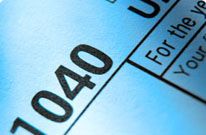Search results
Filing Individual Taxes - IRS
www.irs.govDeadline: April 18
- 1040 Form Instructions
- 1040-EZ Form Instructions
- 1040A Form Instructions
- 1040ES Form & Instr.
- Tax Tables Download
- Schedule A Form Instructions
- Schedule D Form Instructions
Use Schedule D to report sales, exchanges or some involuntary conversions of capital assets, certain capital gain distributions, and nonbusiness bad debts.
SCHEDULE D (Form 1040) Department of the Treasury Internal Revenue Service Capital Gains and Losses Attach to Form 1040, 1040-SR, or 1040-NR. Use Form 8949 to list your transactions for lines 1b, 2, 3, 8b, 9, and 10. Go to www.irs.gov/ScheduleD for instructions and the latest information. OMB No. 1545-0074. 2023. Attachment Sequence No. 12
These instructions explain how to complete Schedule D (Form 1040). Complete Form 8949 before you complete line 1b, 2, 3, 8b, 9, or 10 of Schedule D. Use Schedule D: To figure the overall gain or loss from transactions reported on Form 8949; To report certain transactions you don't have to report on Form 8949;
Oct 19, 2023 · Most people use the Schedule D form to report capital gains and losses that result from the sale or trade of certain property during the year. In 2011, however, the Internal Revenue Service created a new form, Form 8949, that some taxpayers will have to file along with their Schedule D and 1040 forms.
Apr 17, 2024 · Information about Schedule D (Form 1040 or 1040-SR), Capital Gains and Losses, including recent updates, related forms, and instructions on how to file. Use Schedule D to report sales, exchanges or some involuntary conversions of capital assets, certain capital gain distributions, and nonbusiness bad debts.
Jan 4, 2024 · Schedule D is an IRS form to help taxpayers compute their capital gains or losses and the taxes due. The calculations from Schedule D are combined with individual tax return Form 1040,...
Jan 20, 2024 · Schedule D is an IRS tax form that reports your realized gains and losses from capital assets, that is, investments and other business interests.

